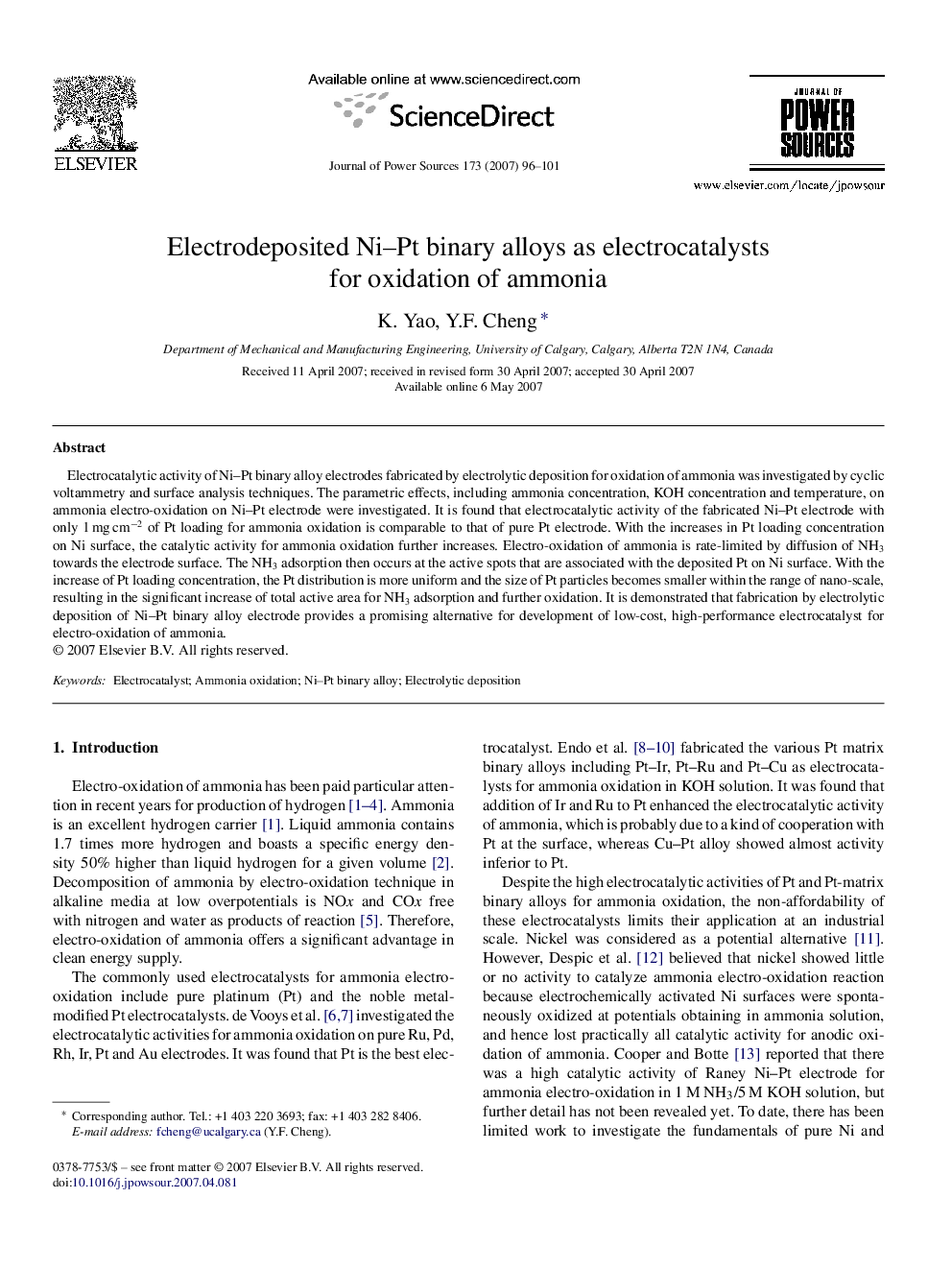| Article ID | Journal | Published Year | Pages | File Type |
|---|---|---|---|---|
| 1294873 | Journal of Power Sources | 2007 | 6 Pages |
Electrocatalytic activity of Ni–Pt binary alloy electrodes fabricated by electrolytic deposition for oxidation of ammonia was investigated by cyclic voltammetry and surface analysis techniques. The parametric effects, including ammonia concentration, KOH concentration and temperature, on ammonia electro-oxidation on Ni–Pt electrode were investigated. It is found that electrocatalytic activity of the fabricated Ni–Pt electrode with only 1 mg cm−2 of Pt loading for ammonia oxidation is comparable to that of pure Pt electrode. With the increases in Pt loading concentration on Ni surface, the catalytic activity for ammonia oxidation further increases. Electro-oxidation of ammonia is rate-limited by diffusion of NH3 towards the electrode surface. The NH3 adsorption then occurs at the active spots that are associated with the deposited Pt on Ni surface. With the increase of Pt loading concentration, the Pt distribution is more uniform and the size of Pt particles becomes smaller within the range of nano-scale, resulting in the significant increase of total active area for NH3 adsorption and further oxidation. It is demonstrated that fabrication by electrolytic deposition of Ni–Pt binary alloy electrode provides a promising alternative for development of low-cost, high-performance electrocatalyst for electro-oxidation of ammonia.
